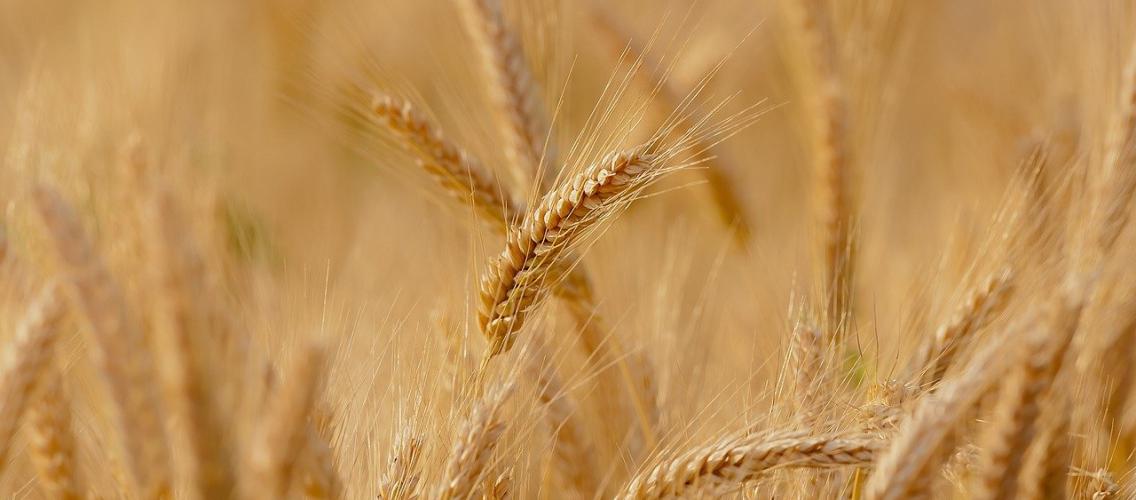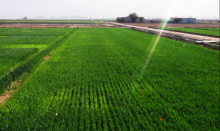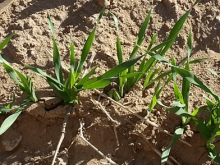
Small Grains
General Information
Nitrogen Management Tests for Small Grains

Nitrogen testing and management are important for small grain production. Soil tests are conducted prior to planting, and plant tissues should be monitored during the growing season. Extension Specialists at the University of Arizona have established guidelines for nutrient levels and fertilizer applications. See the full post for more information on these guidelines and small grains management.
Dated: March 2, 2021
Notes from Your Extension Agent

Looking at fields, most of the small grains in central Arizona were in tiller production. Tillering usually starts when the plant has 3-4 leaves. Critical management factors for this stage are early weed control and good nitrogen management. Tillers are an important component of wheat yield because they have the potential to develop grain-bearing heads. Adjust the crop’s need for nitrogen by tissue sampling for nitrate is critical.
We have a video that describes how to take these tissue samples at different growth stages of small grains http://www.youtube.com/watch?v=FBLcPQSk5bU.
Photo of barley field in east Pinal County
Dated: Feb. 2015
Small Grains Harvest Time
As barley and wheat have headed out and started to ripen now is the time to think about harvest. Once grain reaches physiological maturity, that is as good as it’s going to get. Physiological maturity is the point when the kernel goes from soft dough to hard dough stage. You will see the heads go from green in color to a golden brown. For harvesting, the recommended kernel moisture is <15%, often depending on drying and storing procedures. A simple test to see if grain is ready for harvest is to rub grain head between your palms. If kernels do not easily separate from the chaff then it is too moist.
Dated: May 2014
Notes form Your Extension Agent
Most early planted wheat and barley appear to be at the 1st node stage. This is the point where the plant develops the maximum number of florets and, therefore, maximum yield potential. Good nutrient and water supply are important for determining yield potential at this stage. Wheat and barley use about 2 acre-feet of water in Arizona, but 3 to 3.5 ft is often required with surface flood irrigation due to inefficiencies in the irrigation system. Water stress at any stage can reduce the yields of small grains. Small grains are most susceptible to water stress during jointing, intermediate in susceptibility during tillering, and least susceptible during grain fill. Extreme water stress can reduce the potential number of seeds per head.
Late planted wheat appears to be at the 3 to 5 leaf stage to the tiller production stage. At this stage, early weed control and good nitrogen management is important. It is time to scout for aphids, stink bugs and other insects.
Dated: Feb. 2014
Notes from Your Extension Agent
The Small Grains Advisory provides bi-weekly estimates of durum and barley growth stage for two planting dates at 12 AZMET locations from January through May.
For central Arizona, it looks like we are at the 5-leaf stage going into first node for early planted small grains. At this stage, you will want to start collecting lower stem samples for NO3-N analysis. Check out these 2 sites for information on nutrient management in small grains: https://cals.arizona.edu/crops/soils/azngrain.pdf and http://cals.arizona.edu/crops/cotton/files/Fertilizing_small_grains.pdf.
For later planted small grains you will be at the 3-leaf going to 5-leaf stage. Here you will want to scout for weeds, irrigate, and be thinking about going out in the field soon for stem collection for N analysis.
Dated: Feb. 2014
Presentations
- Small Grain Growth and Development
- January 27, 2021 - Dr. Ottman
- Recording
- Nitrogen Management Tools for Wheat
- January 6, 2020 - Dr. Ottman
- Wheat and Barley Varieties for Arizona 2020
- October, 2020 - Dr. Ottman

